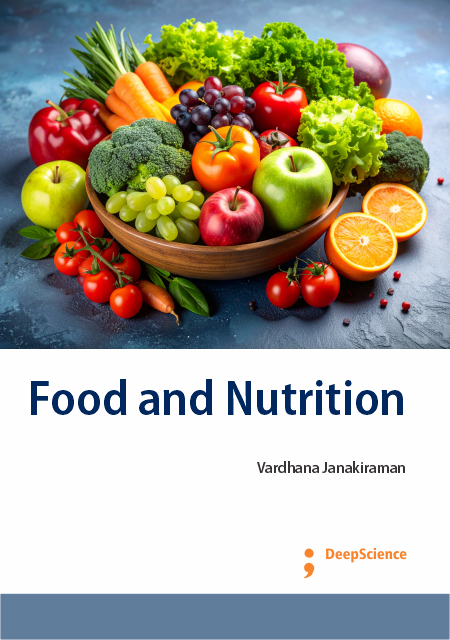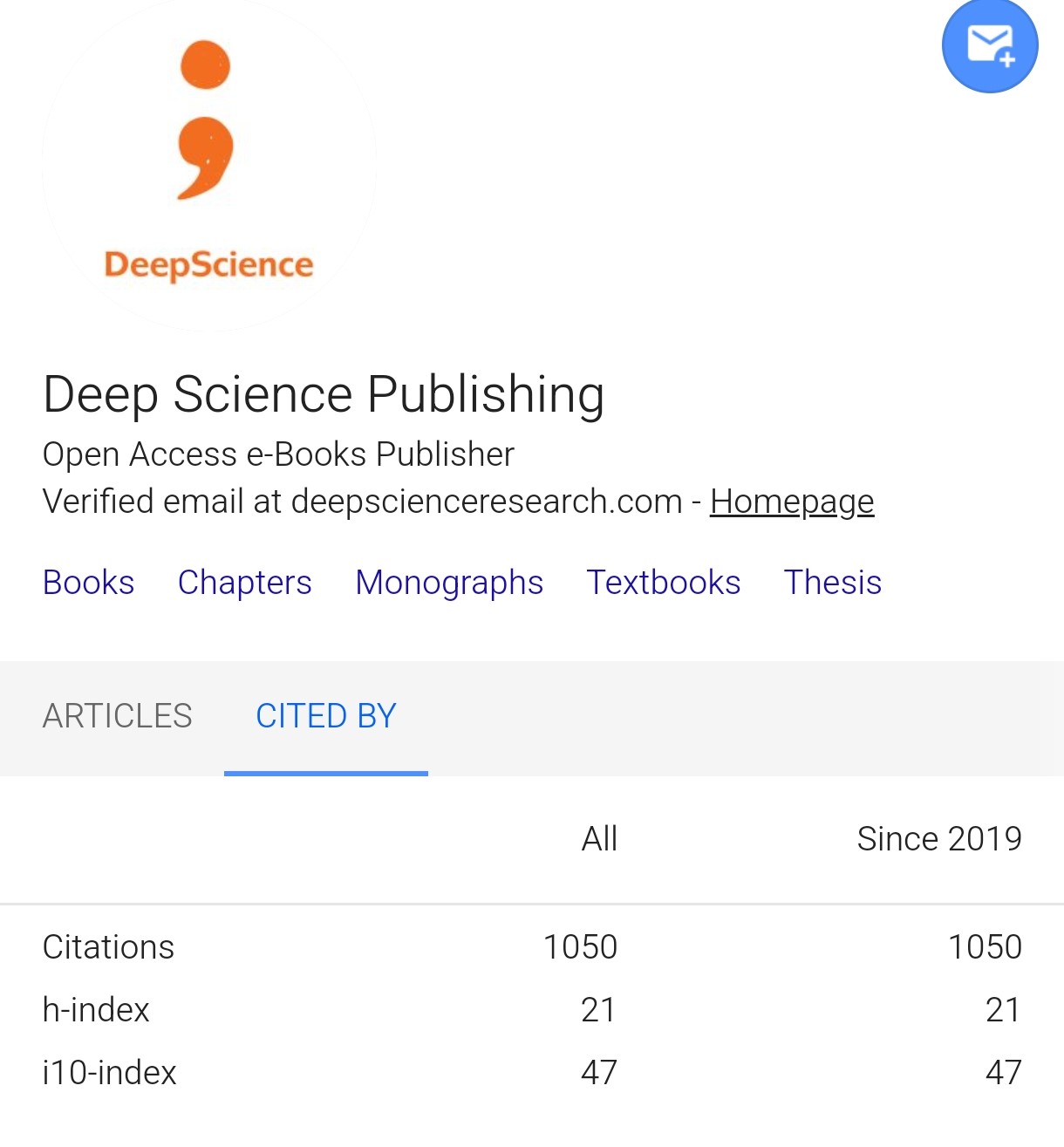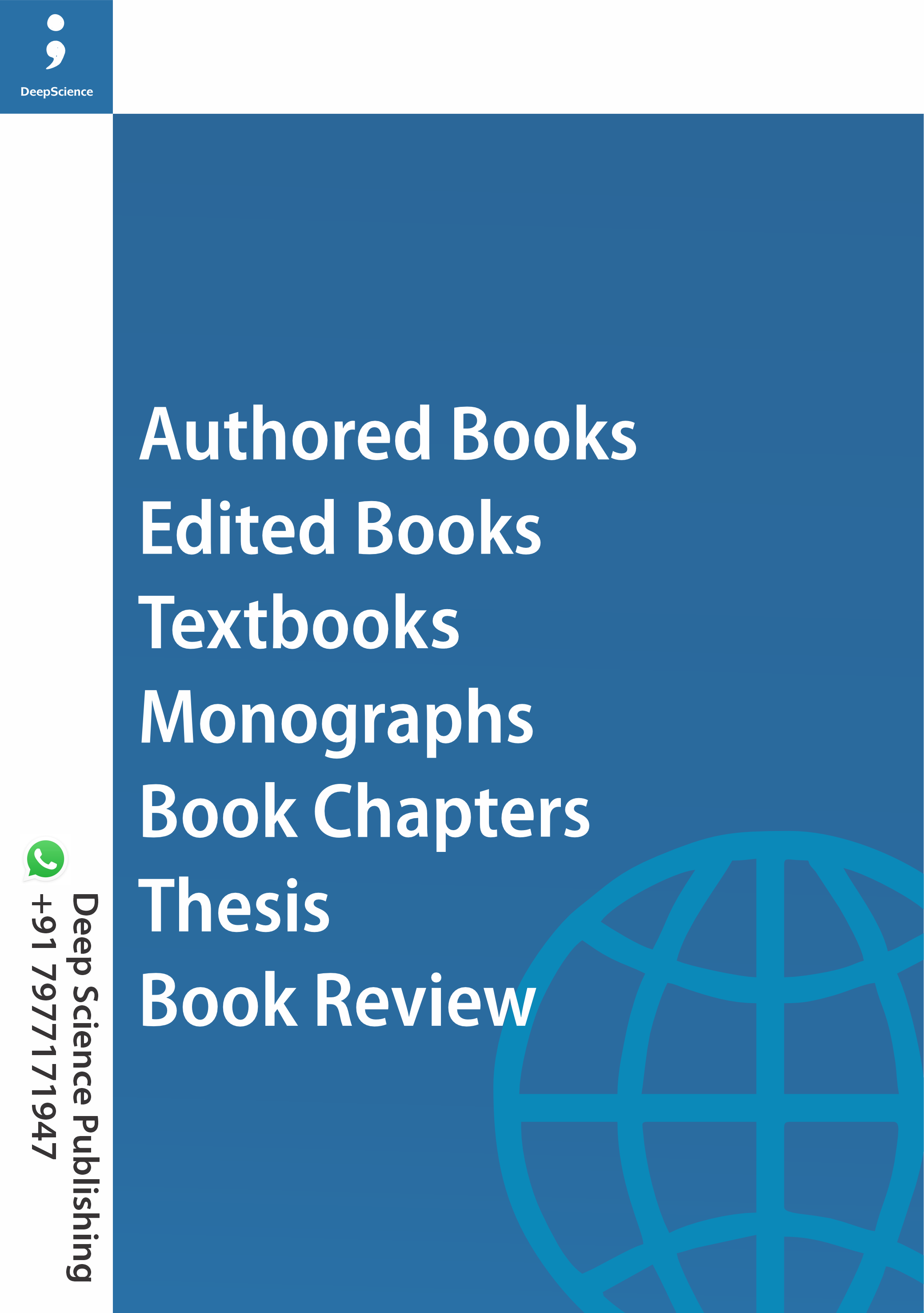Food and Nutrition
Keywords:
Nutrition , Diet, Macronutrients, Functional foods, Food safety, Meal planning, ImmunitySynopsis
Food and Nutrition is a comprehensive guide addressing the intricate dynamics of contemporary dietary patterns and their impact on health and well-being. Informed by the recognition of rising health issues and the environmental footprint of food choices, this book serves as a vital resource. It empowers readers with a holistic understanding of nutrition, transcending traditional dietary advice to encompass cultural influences, lifestyle considerations, and sustainability. Practical and realistic, the guide offers actionable insights for achieving a balanced and varied diet tailored to individual needs. Additionally, it explores the production of functional foods, highlighting their potential positive impact on human health and life. Whether for individuals seeking informed dietary choices, healthcare professionals, or those passionate about health and culinary arts, this book provides a valuable reference, fostering a positive and informed relationship between individuals and their food choices in today's multifaceted food landscape.
References
Whitney, E., & Rolfes, S. R. (2015). Understanding Nutrition. Cengage Learning.
Fischler, C. (1988). Food, Self and Identity. Social Science Information, 27(2), 275-292
Macht, M. (2008). How emotions affect eating: A five-way model. Appetite, 50(1), 1-11.
Gropper, S. S., Smith, J. L., & Groff, J. L. (2008). Advanced Nutrition and Human Metabolism. Cengage Learning.
Calder, P. C., Carr, A. C., Gombart, A. F., & Eggersdorfer, M. (2020). Optimal Nutritional Status for a Well-Functioning Immune System Is an Important Factor to Protect against Viral Infections. Nutrients, 12(4), 1181.
Hemilä, H., & Louhiala, P. (2013). Vitamin C for preventing and treating pneumonia. Cochrane Database of Systematic Reviews, (3).
Carr, A. C., & Maggini, S. (2017). Vitamin C and Immune Function. Nutrients, 9(11), 1211.
Sizer, F. S., & Whitney, E. N. (2013). Nutrition: Concepts and Controversies. Cengage Learning.
Mann, J., Cummings, J. H., & Lean, M. E. (2015). Carbohydrates. In Essentials of Human Nutrition (pp. 9-25). Oxford University Press.
Anderson, J. W., Baird, P., Davis, R. H., Ferreri, S., Knudtson, M., Koraym, A., ... & Williams, C. L. (2009). Health benefits of dietary fiber. Nutrition Reviews, 67(4), 188-205.
Popkin, B. M., D'Anci, K. E., & Rosenberg, I. H. (2010). Water, hydration, and health. Nutrition Reviews, 68(8), 439-458.
Campbell, W. W., & Layman, D. K. (2010). Nutritional regulation of muscle protein synthesis with resistance exercise: strategies to enhance anabolism. Nutrition & Metabolism, 7(1), 30.
Kris-Etherton, P. M., Innis, S., & American Dietetic Association. (2007). Position of the American Dietetic Association and Dietitians of Canada: dietary fatty acids. Journal of the American Dietetic Association, 107(9), 1599-1611.
Combs Jr, G. F. (2012). The Vitamins: Fundamental Aspects in Nutrition and Health. Academic Press.
Shils, M. E., Shike, M., Ross, A. C., Caballero, B., & Cousins, R. J. (2005). Modern Nutrition in Health and Disease. Lippincott Williams & Wilkins.
Wilmore, J. H., & Costill, D. L. (2007). Physiology of Sport and Exercise. Human Kinetics.
McArdle, W. D., Katch, F. I., & Katch, V. L. (2010). Exercise Physiology: Nutrition, Energy, and Human Performance. Lippincott Williams & Wilkins.
Frankenfield, D. (2013). Energy expenditure and protein requirements after traumatic injury. Nutrition in Clinical Practice, 28(4), 444-453.
Muller, M. J., Bosy-Westphal, A., Klaus, S., & Kreymann, G. (2004). Adaptive thermogenesis with weight loss in humans. Obesity, 12(3), 204-214.
Whitney, E. N., Rolfes, S. R., Crowe, T., Cameron-Smith, D., & Walsh, A. (2018). Understanding Nutrition: Australian and New Zealand Edition. Cengage Learning
Winter, C. K., & Davis, S. F. (2006). Organic foods. Journal of Food Science, 71(9), R117-R124.
Watson, D. H. (2004). Natural food toxicants. In Food chemical safety (pp. 23-56). Springer.
Smith, J. P., & Spencer, J. B. (2013). Food Additives. In Food Additives (pp. 1-7). Springer.
Pico, Y., & Barceló, D. (2015). Emerging contaminants in water: New developments in analytical chemistry. Royal Society of Chemistry.
Sun, D. W. (2012). Infrared spectroscopy for food quality analysis and control. Academic Press.
Sperber, W. H. (2000). Protecting the food supply: Making the link from modern farming practices to safe and wholesome food. Springer.
Escott-Stump, S. (2012). Nutrition and Diagnosis-Related Care. Lippincott Williams & Wilkins.
Mahan, L. K., Raymond, J. L., & Escott-Stump, S. (2016). Krause's Food & the Nutrition Care Process. Elsevier.
National Institute of Nutrition (Indian Council of Medical Research). (2010). Dietary Guidelines for Indians - A Manual. Available online: https://nin.res.in/downloads/DietaryGuidelinesforNINwebsite.pdf
Zhang P. Influence of Foods and Nutrition on the Gut Microbiome and Implications for Intestinal Health. Int J Mol Sci. 2022 Aug 24;23(17):9588.
Fischer, K. ( 2022). What Are Genetically Modified Foods? WebMD. https://www.webmd.com/diet/genetically-modified-foods-overview













